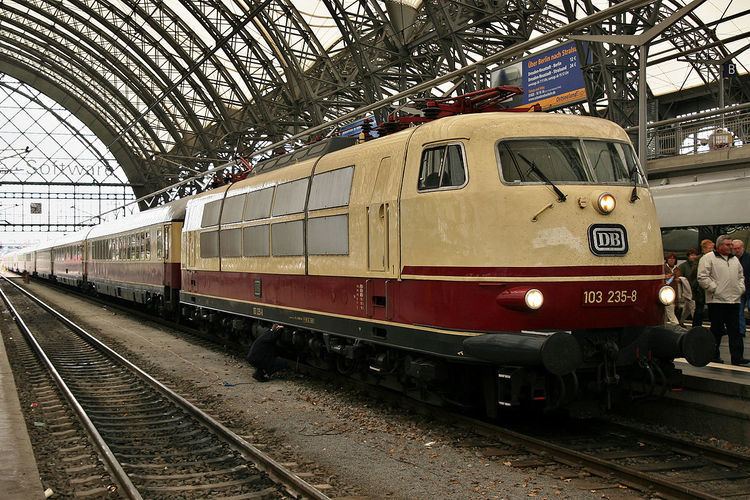 | ||
Flexicoil suspension is a wear-resistant and maintenance-free suspension system, used in railway vehicles. It is a secondary suspension, installed between the body and the bogie of the locomotive, passenger car or wagon so fitted.
Contents
This type of suspension is most commonly used in modern rail passenger cars when air suspension is not required, since it is cheaper to buy and to maintain than air suspension.
History
The word "Flexicoil" was coined by General Motors' Electro Motive Division, to describe a suspension system fitted to some of the diesel locomotives in its range. As early as the 1930s, flexicoil suspensions were being used in locomotives in Spain, the Soviet Union and Africa.
Flexicoil suspension technology in high speed electric locomotives was pioneered in Germany in the 1950s and 1960s, in various DB standard electric locomotives, and especially the DB Class 103. Between 1969 and 1971, British Rail conducted trials of a flexicoil suspension system in a British Rail Class 86 locomotive, no E 3173, which was affectionately nicknamed "Zebedee", after the jack-in-the-box character in the BBC television series The Magic Roundabout. These experiments were successful, and led initially to the rebuilding of 56 members of the class with flexicoil suspension, as class 86/2. Ultimately, all members of class 86 were fitted with flexicoil suspensions.
Technical details
The springs in a flexicoil suspension are made of steel. Protruding from above and below, and into, each spring is a spherical rubber dome that can absorb some of the horizontal forces. These domes are connected firmly to either the vehicle body (above) or the bogie frame (below). Under this arrangement, each flexicoil spring is twisted and moved from its vertical axis when the vehicle is cornering. This helps the two bogies to align themselves equally underneath the vehicle body. The vertical forces are absorbed entirely by the steel springs.
As the springs have relatively soft characteristics, hydraulic vertical dampers must also be installed for vibration damping at higher speeds than 160 km/h (99 mph), along with longitudinal dampers. Lateral damping is not normally required.
In railway passenger cars fitted with flexicoil suspension, the springs are the only mechanical connection between the bogie and the car body. In heavier types of flexicoil suspension rolling stock, a bogie pivot fitted with rubber-metal bearings is used to hold a cross anchor yoke, which transfers the forces to the bogie frame via two cross anchor link pins.
Locomotive bogies are usually also provided with a weight transfer linkage, or with a different tension transmission.
